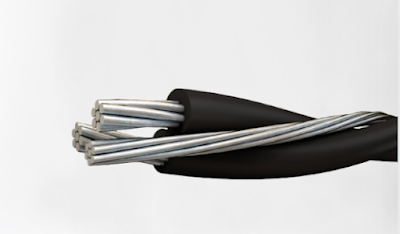What is Coil Tubing Used For?
What is Coil Tubing?
Coil tubing is a continuous length of flexible tubing wound onto a large spool or reel, typically made of steel or composite materials. It is used in various oil and gas operations, including well intervention, stimulation, cleanout, and completion. Coil tubing is distinguished by its ability to be continuously fed into and retrieved from a wellbore while various tools and equipment are deployed through the tubing to perform specific tasks.
Applications of Coil Tubing:
Well Intervention
Coil tubing is widely used for well intervention operations, including cleanout, logging, perforating, and mechanical interventions such as fishing and milling. Its flexibility and maneuverability allow operators to access and remediate wells more efficiently and cost-effectively than conventional methods.
Stimulation
Coil tubing is utilized in well stimulation treatments such as acidizing, hydraulic fracturing (fracking), and nitrogen kick-offs. It delivers chemicals, fluids, and proppants into the wellbore to enhance reservoir productivity and increase hydrocarbon recovery rates.
Drilling Assistance
Coil tubing can serve as a conduit for drilling fluids, allowing operators to drill horizontal or directional wells more efficiently. It is often used in conjunction with coiled tubing drilling (CTD) techniques to access unconventional reservoirs and optimize drilling performance.
Cleanout and Debris Removal
Coil tubing is employed for cleanout and debris removal operations to remove sand, scale, paraffin, and other obstructions from wellbores, tubulars, and downhole equipment. Its high-pressure jetting capabilities enable efficient cleaning and descaling without the need for rig mobilization.
Well Completion
Coil tubing is utilized during well completion operations, including perforating, tubing installation, and packer setting. It facilitates the deployment of completion tools and equipment into the wellbore, allowing for precise placement and optimal reservoir connectivity.
Benefits of Coil Tubing:
Coil tubing offers a range of advantages that contribute to its effectiveness and widespread adoption in the oil and gas industry:
Increased Efficiency
Coil tubing operations boast remarkable speed and efficiency when compared to traditional interventions such as wireline or workover rig methods. This efficiency translates to reduced downtime and operational costs, allowing operators to complete tasks more quickly and economically.
Enhanced Safety
One of the most significant advantages of coil tubing operations is their inherent safety features. Since these operations are conducted from the surface, there's minimal need for personnel to enter the wellbore, significantly reducing the risk of accidents and injuries associated with traditional intervention methods. This aspect prioritizes the safety of workers and mitigates potential hazards.
Improved Reservoir Access
Coil tubing's remarkable flexibility and reachability make it ideal for accessing and intervening in wells with complex geometries, including those with multilateral branches and horizontal sections. This capability ensures that operators can effectively address challenges posed by unconventional well configurations, maximizing reservoir access and productivity.
Cost-Effectiveness
Coil tubing operations require fewer personnel, equipment, and rig mobilization compared to conventional interventions. This streamlined approach results in lower overall costs and faster project turnaround times, making coil tubing a cost-effective solution for a wide range of oil and gas applications.
Versatility
Perhaps one of coil tubing's most significant advantages is its versatility. It can be deployed in various well types, including vertical, deviated, and horizontal wells. This adaptability makes coil tubing a versatile tool that can address diverse challenges across different phases of oil and gas operations.
Coil tubing offers a compelling array of benefits, including increased efficiency, enhanced safety, improved reservoir access, cost-effectiveness, and versatility. These advantages underscore its significance as a vital technology in the oil and gas industry, empowering operators to tackle complex challenges and optimize well performance effectively.
Significance of Coil Tubing in the Oil and Gas Industry:
In today's competitive and dynamic oil and gas industry, the adoption of innovative technologies such as coil tubing is essential for enhancing operational efficiency, optimizing reservoir performance, and maximizing hydrocarbon recovery. Coil tubing's versatility, efficiency, and cost-effectiveness make it a valuable tool for operators seeking to improve well productivity, reduce operating costs, and mitigate risks associated with well interventions.
Conclusion:
Coil tubing has emerged as a game-changing technology in the oil and gas industry, offering unparalleled flexibility, efficiency, and versatility in well intervention and completion operations. From cleanout and stimulation to drilling assistance and well completion, coil tubing plays a critical role in optimizing well performance, increasing hydrocarbon recovery, and maximizing operational efficiency. As the industry continues to evolve, coil tubing will remain a key enabler of innovation and success in oil and gas exploration and production.
Znergy Cable stands out as one of the best coiled tube manufacturers in the industry, offering exceptional quality, innovation, and customer support. With its experience, expertise, state-of-the-art facilities, and commitment to excellence, Znergy Cable is a trusted partner for oil and gas operators seeking reliable and high-performance coil tubing solutions.



Comments
Post a Comment